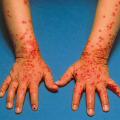When you're feeling under the weather, fever and body aches can be symptoms of something more serious. It's important to understand what causes these symptoms so that you can seek the appropriate medical treatment. Fever and body aches can be caused by a variety of conditions, from simple viral illnesses to more serious illnesses such as meningitis or Lyme disease. While some causes are relatively harmless, it's important to take all symptoms seriously and seek medical attention if necessary. In this article, we'll explore the common causes of fever and body aches and discuss when it's important to seek medical care. Fever and body aches can be caused by a variety of conditions, ranging from the common cold to more serious illnesses such as influenza or even meningitis. Viral and bacterial infections are two of the most common causes of fever and body aches, but autoimmune diseases, medication side-effects, and other illnesses can also be responsible.
It is important to identify the underlying cause in order to determine the best course of treatment. Common symptoms of fever and body aches include chills, fatigue, headache, muscle aches, joint pain, and rash. If you experience any of these symptoms, it is important to seek medical help. Your doctor may recommend over-the-counter medications, rest and fluids, or antibiotics (in cases of bacterial infections).In order to prevent infection, there are some simple steps people can take. Practicing good hygiene is essential; washing your hands regularly can help reduce the spread of germs.
Additionally, getting vaccinated can protect against many illnesses that can cause fever and body aches.
Symptoms of Fever and Body Aches
Fever and body aches are common symptoms that can be caused by a variety of conditions, ranging from the common cold to more serious illnesses such as influenza or even meningitis. Common symptoms include chills, fatigue, headache, muscle aches, joint pain, and rash. Chills occur when the body temperature rises above normal. They are often accompanied by a feeling of coldness and shivering. Fatigue is a feeling of extreme tiredness and lack of energy.Headache is a common symptom of fever and body aches, usually felt as a throbbing pain on both sides of the head. Muscle aches can range from mild to severe, and may be accompanied by stiffness. Joint pain is another symptom that is commonly associated with fever and body aches. It can feel like a dull, throbbing sensation or sharp pain. Lastly, a rash may appear on the skin that can vary in color and intensity. It is important to seek medical help if any of these symptoms become severe or persistent.
A doctor can diagnose the underlying cause of the symptoms and provide the appropriate treatment.
Prevention
Fever and body aches can be prevented by following some simple steps. Practicing good hygiene is one of the best ways to help prevent infection. This includes washing hands regularly, particularly after touching surfaces or objects that may contain germs. It is also important to avoid close contact with those who are sick, such as shaking hands or sharing utensils.Another way to reduce the risk of fever and body aches is to get vaccinated. Vaccinations can help reduce the risk of infection by protecting against certain viruses and bacteria that cause illnesses. It is important to consult a healthcare provider for advice on which vaccinations are right for you. Finally, it is important to take steps to avoid contact with contaminated water or food, as this can increase the risk of infection.
Practicing food safety such as washing fruits and vegetables before eating and cooking food thoroughly can help reduce the risk of getting sick.
Causes of Fever and Body Aches
Fever and body aches can have many causes, ranging from viral or bacterial infections to autoimmune diseases and medication side-effects. It is important to understand the various potential causes in order to help determine the best course of treatment and prevention.Viral or Bacterial Infections
Viral and bacterial infections are a common cause of fever and body aches. Viruses such as the flu, common cold, and other respiratory illnesses are known to cause these symptoms.Bacterial infections, such as strep throat, can also cause fever and body aches. Many of these infections can be treated with antibiotics, but some viruses may require rest and fluids to help treat the symptoms.
Autoimmune Diseases
Autoimmune diseases such as lupus, rheumatoid arthritis, and inflammatory bowel disease can all cause fever and body aches. These diseases occur when the body’s immune system attacks its own cells, causing inflammation and pain. Treatment of autoimmune diseases may involve medications such as corticosteroids or immunosuppressants to help reduce inflammation.Medication Side-Effects
Certain medications can also cause fever and body aches as side-effects.These may include antibiotics, chemotherapy drugs, or even over-the-counter medications such as ibuprofen. It is important to discuss any potential side-effects with your doctor before taking any medication.
Diagnosis and Treatment
The accurate diagnosis of the underlying cause of fever and body aches is essential for determining the most effective treatment plan. In many cases, these symptoms can be caused by a viral infection, such as the common cold, influenza, or even meningitis. It is important to be aware of the various treatment options available, and when to seek medical help for a more serious condition.Over-the-counter medications, such as ibuprofen or acetaminophen, are commonly used to reduce fever and body aches. Rest and fluids can also be helpful in managing these symptoms, as well as helping the body to fight off the infection. In some cases, antibiotics may be required if the infection is caused by a bacterial illness. It is important to seek medical advice if the symptoms persist or worsen, as this may indicate a more serious underlying condition.
Taking steps to prevent further infections is also important in managing fever and body aches. Good hygiene practices, such as handwashing and avoiding contact with people who are ill, can help reduce the risk of infection. Vaccinations are also available to help protect against certain illnesses which can cause fever and body aches. Fever and body aches can be caused by a variety of conditions, ranging from the common cold to more serious illnesses such as influenza or even meningitis.
It is important to recognize the signs and symptoms of these conditions and seek medical help if they persist or worsen. Prevention methods such as handwashing and vaccination can also help reduce the chance of infection and should be considered. In conclusion, fever and body aches can be caused by a variety of conditions. It is important to recognize the symptoms and seek medical help if necessary. Prevention methods such as handwashing and vaccination can also help reduce the chance of infection.


